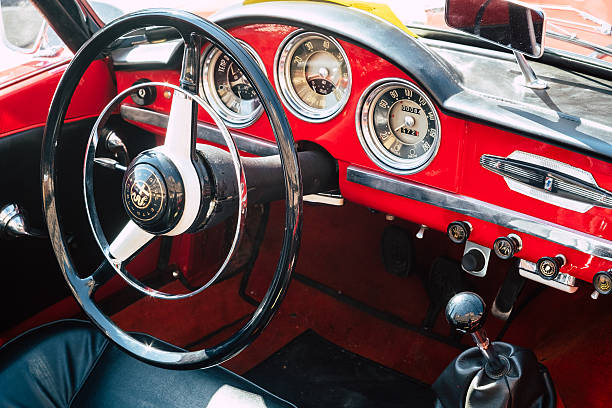The Alfa Romeo Giulietta name is well-known. It was first introduced in the 1950s. This established Alfa Romeo as an automotive brand that could offer a wide range of vehicles.
Although many iterations and generations of the Giulietta have passed, the 2010 model was greeted with great anticipation.
The Giulietta is a competitor to the Volkswagen Golf, BMW 1 Series, and Audi A3 Sportback. Until earlier this year, the Giulietta was only available in petrol. So it was with great expectation, that we took the new $40,990 2.0-litre turbo-diesel coupled to a six-speed dual-clutch transmission.
Alfa Romeo has delivered as expected from the outside. This car is the only one in its segment that stands out above the rest. It is easily distinguished from German competitors and outshines the older Swede.
Alfa’s triangular grille is located at the front. It flows well from the lines of the bonnet. Although it’s not the type of shape you would instantly fall in love with, it has style and character.
The Giulietta is a 5-door hatch with two rear doors. However, the handle sits high to make the handle look like an extension of the rear windows. Alfa Romeo’s rear is more conservative, but the LED lights still make an impact.
The story will be a little different if you sit inside. The Giulietta has a lot of hard plastics. And, unlike other tech-savvy models like the BMW 1 Series, its media interface is an old-fashioned stereo system with a black-and-red display.
It works; it has Bluetooth phone and audio streaming capabilities. However, don’t expect to use satellite navigation or artist display.
A few switches add to Giulietta’s sporty character. It’s easy to see why pilots would be more familiar with the driving mode switch, which is evident throughout the cabin.
Both the front and rear cloth-trim seats are well-suited for daily commutes. You can fit four people in the rear seat, but not much about the middle.
The car’s test car had a constant rattle, and the central air-conditioning vent caused it. This happened at highway speeds while the aircon was on. We initially thought that turning off the aircon would be the best solution, but Brisbane’s hot summer makes it impossible.
It could be said that it is just part of the Alfa-ownership experience, which thousands have enjoyed for decades.
Interior-wise, the Giulietta could be easily improved with a more advanced infotainment system. We recommend getting a replacement stereo head unit from a third party. Although the Alfa system is very well integrated into your dash, this may be a problem.
The JTDM 2.0-litre turbo Diesel engine is a great unit. The diesel engine produces 125kW power and 350 Nm of torque through a six-speed TCT transmission. It gets the Guileitta to 100km/h from a standstill in a respectable-for-an-oil burner of 7.9 seconds, and Alfa claims it sips just 4.5L of diesel per 100km for the combined highway and city cycle.
We crossed above 6L/100km during our week behind the wheel. This included lots of city work, dynamic testing and plenty of driving.
The front wheels drive the diesel, giving a steady sense of torque steer. However, you can force the issue and get all the torque at 1750rpm. Although it’s not an issue if the accelerator pedal is pressed, it can be a problem if it hits a bump or a corner.
Alfa Romeo’s dry dual-clutch transmission, which is the result of Fiat powertrain technology, can be compared to the first-generation DSG systems produced by Volkswagen. It can be quite crude in traffic, and the gearshifts at low speeds can feel harsh. Our test car stalled twice when we tried to reverse it and drive out of a steep driveway.
The stop-start engine system turns off the engine to save fuel. However, it is not as user-friendly as its counterparts. It takes far too much time to start the engine again from the moment you release the brake pedal and press the accelerator pedal. Petrol models start at $36,990 for a turbo manual 1.4-litre engine and rise to $41,990 with the quad Verde hot hatch with a turbo 1.7-litre turbo. They are faster at the stop-start.
It’s easy to get used to once you know how the TCT works and can anticipate its shift points. It’s quite simple once you treat the Giulietta like a sporty hatch. The gearbox starts to work well and fires off rapid shifts.
The ride is a bit too European for our poor roads, but it has great handling when pushed. Although it isn’t a 1 Series, it has rear-wheel drive; it’s still more engaging than the Golf and C30 in terms of grip and agility.
The Giulietta does not come as a bland, small European hatchback. You buy it because you need it. You make this choice because you desire to own an Alfa Romeo. You want to drive something that is unique and has a soul.
Although it’s cliché to say Alfa Romeos have a soul is true, there’s something you can get with an Alfa Romeo that’s not available with mass-produced cars. Each Alfa Romeo is unique, and each one has its personality.
You might find yourself forgiving Giulietta for its little nits as we did.
If you are willing to compromise on a conservative appearance, the Volkswagen Golf is a semi-premium hatchback that’s more capable and less expensive.

